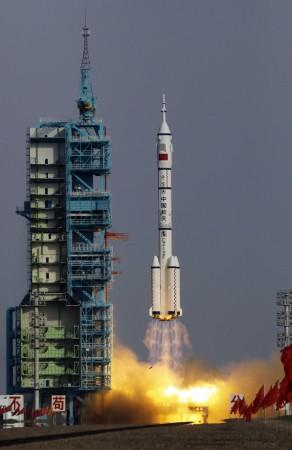
Chinese astronauts successfully completed the first-ever manual docking of the Shenzhou 9 spacecraft with an orbiting lab module on Sunday.
The Shenzhou 9 spacecraft and its three crew members docked with the Tiangong-1 lab module a little before 1:00 p.m (05:00 GMT) under manual control of the astronauts, which is indeed much more challenging than the automated docking in terms of orbit control, according to the space scientists.
In the manual docking exercise, the spacecraft Shenzhou 9 was separated for about 400 meters from the Tiangong 1 module for about two minutes before re-connecting, Reuters reported.
The spacecraft has already conducted an automated docking on June 18, two days after it took-off from the Jiuquan Satellite Launch Center in northwestern China, with China's first space laboratory module, Tiangong-1 module, which is orbiting the outer space.
The challenging manned space docking mission is a major step towards development in China's ambitious campaign to build a space station by 2020. The manoeuvre was telecast live on China's state television.
The Chinese astronauts have been sent to fulfill the country's space mission. During the 13-day mission, two astronauts reportedly will test the module's life-support system, while the third one will remain in the capsule in order to deal with any emergency situations.
With this mission, China has introduced country's first woman astronaut entering the space. Liu Yang was selected for the mission after two years of extensive training and testing of her astronautic skills and adaptation capability to space environment.
To suit the requirements of the lady astronaut in the spacecraft, the Chinese space planner has made some necessary changes in the spacecraft.
A certain section of the Tiangong-1 module has been separated by a curtain for Yang to change and blood-enriching food stuff like deserts and chocolates have been introduced in the menu.
(With inputs from Reuters)

















